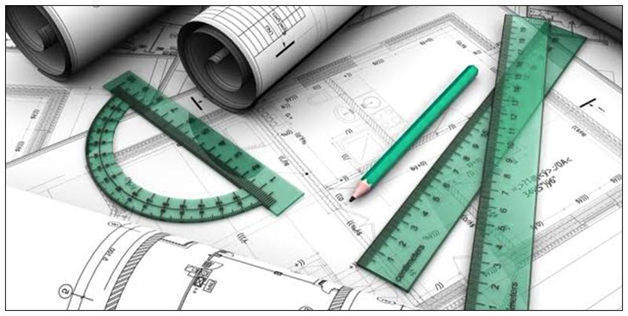Units and Dimensions
Measurement: The process of comparing an unknown physical quantity with a known fixed quantity is called measurement.

Unit: The quantity in which dimension is measured.
Two types:
(i)Fundamental units: which do not depend on other. eg. Mass(kg), length(m), time(s), temperature(K), luminous intensity(Cd),
electric current(A), amount of substance(mol).
(ii)Derived units: Which are derived from Fundamental units.eg. Force(kgms-2), Work done(kgm2s-2) etc.
(iii)Supplementary units: Dimensionless units.There are two supplementary units. They are plane angle (radian, r), and Cone angle (steradian, sr).
- Any values can be measured using its numerical value and its unit.
•Measurement (Q)=value*unit =nu
•From conversion of units: n1u1=n2u2
Dimension: Dimension, generally, is the number of ways of moving from one place to another.
Dimensionless quantities: The quantities which have no dimension (may have unit).Eg. poission's Ratio, laternal strain, longitudinal strain, Refractive index, Emissivity, Relative permitivity, Relative density, Magnification, coefficient of friction, Electric and magnetic susceptibility etc.
System of units: MKS system, CGS system, FPS system, SI-units
Dimension of a physical quantity: The dimension of a physical quantity is defined as the power to which the fundamental quantities are raised to express the physical quantity.
Dimensional formula: The dimensional formula is defined as the expression of the physical quantity in terms of its basic unit with proper dimensions.
Dimensional equation: An equation containing physical quantities with dimensional formula is known as dimensional equation.
Quantity having same dimension:
- work, energy, torque [ML2T-2]
-angular momentum and plancks constant [ML2T-1]
-Force, Thrust, weight, Tension [MLT-2]
-Frequency, angular velocity, angular frequency, velocity gradient [T-1]
-Linear momentum, Impulse [MLT-1] etc.
Some important dimensions
•Gravitational constant(G)=[M-1L3T-2] Hint:
• Coefficient of viscocity(η)= [ML-1T-1] Hint: F=6πηrv
•Stefan's constant(σ)=[ML0T-3K-4] Hint: =
•Electric flux(φ)= [ML3T-3A-1] Hint: φ=EA=
• Resistance(R)= [ML2T-3A-2] Hint: W=I2Rt
•Capacitance(C) = [M-1L2T4A2] Hint: R= WL=
•Velocity of light(c) =[LT-1] Hint: E= or C=
•Dimenison of is? [IOE]
Hint:
Bev=eE=Force[F]
So =v=[LT-1]
•Similarly, etc. represents energy [ML2T-2]
Principle of Homogenity
i)Dimension of all terms of two sides of equation must be same.
(ii)Two quantities can be added or subtracted if they only have same dimension.
eg:
S=ut+at2
where S=distance travelled, a=acceleration, t=time taken, u=initial velocity.
Dimension of LHS=[L]
Dimension of RHS=[LT-1] *[T] + [LT-2] *[T2] ≡[L]
Hence, statement (i) is verified also (ii) Statement follows proof as of first.
Error
•Difference between actual and measured value.
• It can be +ve,-ve or zero.
•Constant has no significance on error.
•Errors are always additive.
•Applied methods for finding errors are:
(i) using calculus [For small change (<10%) only]
Steps: a. First find out dimension or formula (Connecting the given error and subject to find error) of which error is calculated.
b. Take logarithm and differentiate partially with respect to same quantity.
Eg.
What is the % of error on area of circle when error % on measuring radius is 3%?
Soln.
We have area, A=
Taking log,
log A=logπ+log =logπ+log r
Differentiate it partially, =0+2*= 2*3%=6%
Hence, error on measuring area is 6%.
(ii) When error is >10% (Exact method of finding error)
-when error increases
Error%= *100%..............(i)
Let any equation, P= in which % error on Q is t% then,
Final value= K [ Q+t% of Q]n =
From eqn (i),
So, Error%= * 100% = * 100% ..............(ii)
For eg. Find the % change in K.E if %change in momentum is 300%.
Soln:
We have K.E= =
So % error is =* 100 = 1500%(increase)
-when error decreases
Error%= *100%..............(i)
Let any equation, P= in which % error on Q is t% then,
Final value= K [ Q-t% of Q]n =
From eqn (i),
So, Error%= * 100% = * 100% ..............(ii)
For eg. Find the % change in K.E if %change in momentum is 300%.
Soln:
We have K.E= =
So % error is =* 100 = 300%(decrease)